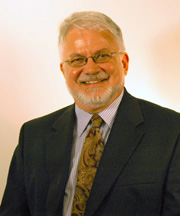
Written Winter 2014
“Many people seem to desire choruses and songs with a rapid movement. [Hopefully] the Mennonites will discontinue the use of these light songs and will return to the more worshipful and doctrinal hymns… of the Church Hymnal.” These words were written by J.C. Wenger in 1937 and published in History of the Mennonites of the Franconia Conference. Today, many are upset in our churches over the influx of scripture songs and worship teams, but the desire of the younger generation to include songs with “rapid movement” has been going on for centuries here in the Franconia Mennonite Conference.
After listening to some SMC church members frustrated with the recent changes in the music in our Sunday morning worship service, I decided to find out if singing in four–part harmony was traditionally Mennonite. I had the feeling that we weren’t seeing the whole picture and that Mennonites didn’t always sing in four–part harmony. So I contacted Joel Alderfer from the Mennonite Heritage Center to hear how our Anabaptist heritage, from the Ausbund to today, has influenced the Franconia Mennonites and their attitudes toward music and worship.
German-speaking Mennonites, who settled between the Delaware and Susquehanna between 1683 and 1773, brought their music with them across the Atlantic. Using both their own Anabaptist ancestors’ compositions and hymns from other European spiritual traditions, they reprinted their old European hymnbook, the Ausbund, in 1742, and first published their own hymnbook, the Zions Harfe, in 1803. The Zion’s Harfe was widely used in Franconia Conference Mennonite meetinghouses and contained only German hymn-texts with no musical notation. In that time, the song leader or vorsinger sat near the pulpit, on one of the raised side benches, and led einstimme (in unison) the German texts to the music of old folk tunes. Since hymn singing was mainly an oral tradition with tunes passed down from one song leader to the next, it was unusual for church members to have access to their own hymn book. Songs were sung in unison and by memory, as the singing of individual parts was considered prideful.
In the mid-1800s, singing schools, a community-based movement that began with Protestants in New England, became popular among the young people of the Indian Valley region. The community came together in social gatherings held in local schoolhouses for a week or two weeks with an itinerant teacher instructing them how to sight-read German and English hymns in three-part and later, four-part harmony. The young people in the region learned not only how to sing a cappella but also how to sing the hymns that were unique to this German and Pennsylvania Dutch speaking community.
Eventually this type of a cappella hymn singing began to be accepted by the surrounding churches, including the German Reformed, Lutheran, Brethren, Schwenkfelder, and Mennonite churches. Some even started sponsoring their own singing schools. In the Mennonite church, this continued into the 20th century, even as late as the 1960’s, where charismatic singing school teachers such as Herman Godshall (Franconia), Samuel Godshall (Deep Run), Henry Bechtel (Vincent), Warren Swartley (Souderton) and Millard Detweiler (Doylestown) made reading “shape notes” a fun experience.
In addition to the singing schools, the hymns were changing due to more interest in speaking and singing English. The Sunday school movement of the mid 1800’s used English. Apparently, in this time period if a town wanted to establish themselves as a reputable town they needed to have a chapel where Union (non-denominational) Sunday school was held. An early English-language Mennonite hymnbook, Hymns & Tunes (1890), mainly with text only, was used in some congregations as a transitional book. The Church and Sunday School Hymnal of 1902 included musical notes with English words and was used in many Franconia Conference congregations. But the more conservative churches along the 113 corridor also continued to use the Zion’s Harf, featuring the traditional German language and no musical notation. Even after the 1927 Church Hymnal was published and adopted by many congregations, a special edition soon appeared with a German appendix of 150 hymns, compiled by Bishop A.G. Clemmer of Franconia.
It took a long time for some Mennonites to see spiritual value in English hymns and gospel songs. There is a story of a preacher in the Deep Run East congregation (John Gross), who wept when English hymns were sung in church. Some churches continued to sing one German hymn each Sunday in worship, even into the 1960’s, to appease the older generation.
Today, the seasoned church members cherish the four-part harmony that represents our rich Mennonite heritage, but musical trends keep changing and our younger, community-based attendees desire congregational music that honors the past while staying relevant to the present. These challenges are not new to our time and will continue to shape our Anabaptist Mennonite traditions as we live and adapt in our current culture.
Thanks to Joel Alderfer of the Mennonite Heritage Center for his research and discussion on the subject of Eastern Pennsylvania Mennonite Music.


